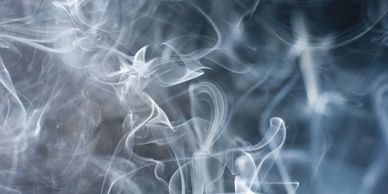NOT everyone fighting Lung Cancer today is a smoker!
Smoking

People who smoke any kind of cigarette are at much greater risk of lung cancer, than people who do not smoke. Smoking harms nearly every organ of the body and diminishes a person’s overall health.
People who switched to light cigarettes from regular cigarettes, are likely to have inhaled the same amount of toxic chemicals, and they remain at high risk of developing smoking-related cancers and other diseases. Smoking causes cancers of the lung, esophagus, larynx (voice box), mouth, throat, kidney, bladder, pancreas, stomach, and cervix, as well as acute myeloid leukemia.
Second Hand Smoke

Cigar smoking causes cancer of the oral cavity, larynx, esophagus, and lung. It may also cause cancer of the pancreas. Moreover, daily cigar smokers, particularly those who inhale, are at increased risk for developing heart disease and other types of lung disease. Regular cigar smokers and cigarette smokers, have similar levels of risk for oral cavity and esophageal cancers. The more you smoke, the greater the risk of disease.
Second Hand Smoke Among the more than 7,000 chemicals that have been identified in second hand tobacco smoke, at least 250 are known to be harmful. For example; hydrogen cyanide, carbon monoxide, and ammonia.
Radon Gas

Radon decays quickly, giving off tiny radioactive particles. When inhaled, these radioactive particles can damage the cells that line the lung. Long-term exposure to radon can lead to lung cancer, the only cancer proven to be associated with inhaling radon. The EPA estimates that radon is responsible for 20,000 lung cancer deaths every year. Get your home tested, it's easy and inexpensive.
Asbestos

Asbestos has been classified as a known human carcinogen (a substance that causes cancer), by the U.S. Department of Health and Human Services, the EPA, and the International Agency for Research on Cancer (2, 3, 7, 8). Studies have shown that exposure to asbestos may increase the risk of lung cancer, and mesothelioma (a relatively rare cancer of the thin membranes that line the chest and abdomen). Although rare, mesothelioma is the most common form of cancer associated with asbestos exposure. In addition to lung cancer and mesothelioma, some studies have suggested an association between asbestos exposure with gastrointestinal and colorectal cancers. In addition, there is an elevated risk for cancers of the throat, kidney, esophagus, and gallbladder.
Hereditary

Even if a cancer-predisposing mutation is present in a family, it does not necessarily mean that everyone who inherits the mutation will develop cancer.
Several factors influence the outcome in a given person with the mutation. One factor is the pattern of inheritance of the cancer syndrome. To understand how hereditary cancer syndromes may be inherited, it is helpful to keep in mind that every person has two copies of most genes, with one copy inherited from each parent. Most mutations involved in hereditary cancer syndromes are inherited in one of two main patterns; autosomal dominant and autosomal recessive.
Drinking Water

According to a 1999 study by the National Academy of Science, Arsenic in drinking water can cause Cancer. In a 2000 report, the EPA found Arsenic in drinking water across 25 states. The NRC estimates up to 56,000,000 people living in these states were drinking tap water with unacceptable levels of Arsenic.
Bottled water is not necessarily any safer than tap water. Often, it is nothing more than tap water that may or may not have been filtered.
If you are considering a water filter for you home, consider a water filter system that is certified by NFS International. While such certification is not necessarily a guarantee, it is better than no certification.
By Law, every local Water Utility is required to report on contaminants and toxins found in your drinking water. However, it will not include averaging over a long period of time. The National Standard for Arsenic is 10 parts per billion (10ppb).
Other suspected risk factors
Other suspected risk factors
Other suspected risk factors

Tuberculosis
Radiation
Arsenic
Chromium
Nickel
Soot
Asbestos
Air Pollution